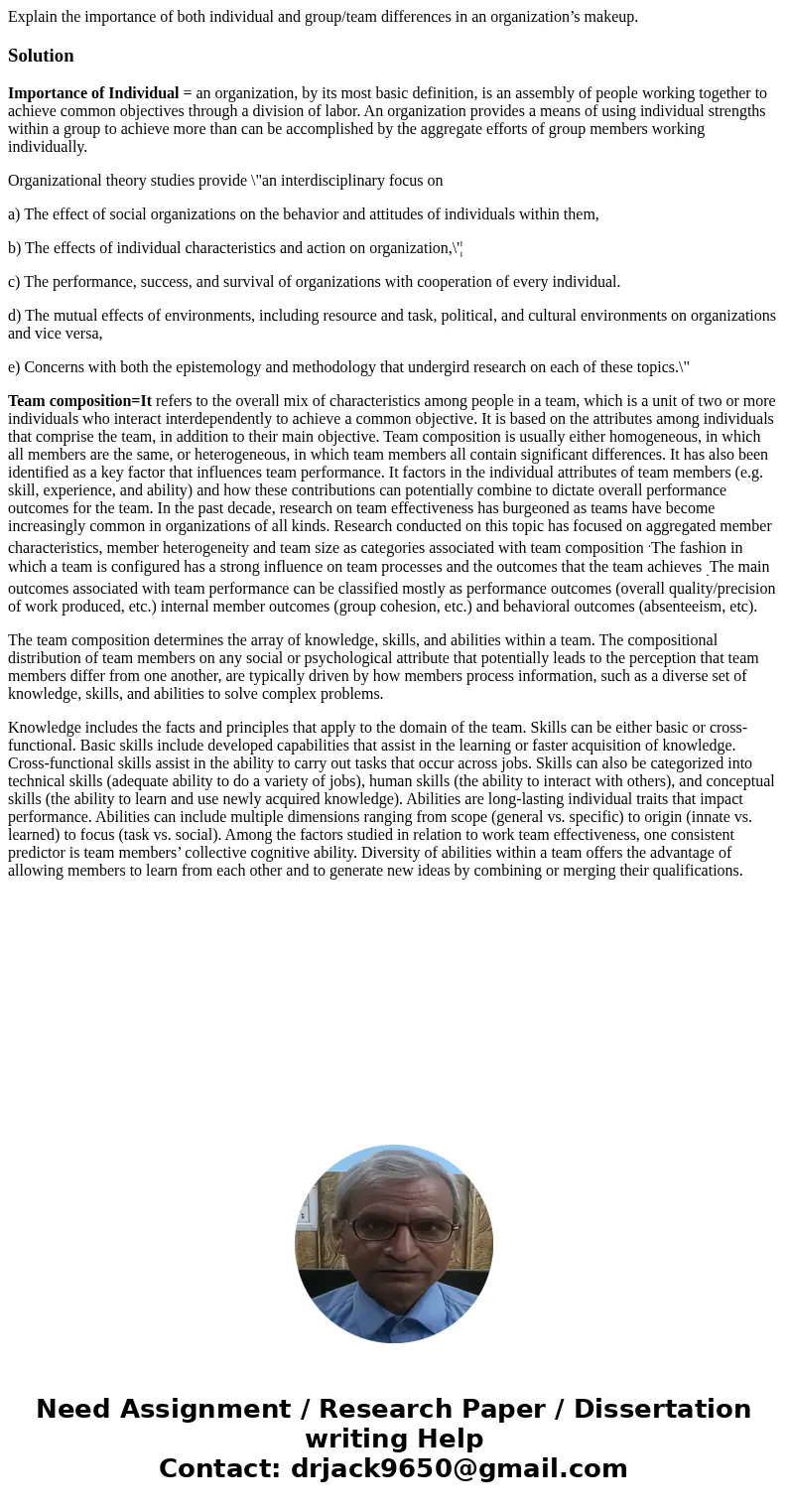Explain the importance of both individual and groupteam diff
Explain the importance of both individual and group/team differences in an organization’s makeup.
Solution
Importance of Individual = an organization, by its most basic definition, is an assembly of people working together to achieve common objectives through a division of labor. An organization provides a means of using individual strengths within a group to achieve more than can be accomplished by the aggregate efforts of group members working individually.
Organizational theory studies provide \"an interdisciplinary focus on
a) The effect of social organizations on the behavior and attitudes of individuals within them,
b) The effects of individual characteristics and action on organization,\'¦
c) The performance, success, and survival of organizations with cooperation of every individual.
d) The mutual effects of environments, including resource and task, political, and cultural environments on organizations and vice versa,
e) Concerns with both the epistemology and methodology that undergird research on each of these topics.\"
Team composition=It refers to the overall mix of characteristics among people in a team, which is a unit of two or more individuals who interact interdependently to achieve a common objective. It is based on the attributes among individuals that comprise the team, in addition to their main objective. Team composition is usually either homogeneous, in which all members are the same, or heterogeneous, in which team members all contain significant differences. It has also been identified as a key factor that influences team performance. It factors in the individual attributes of team members (e.g. skill, experience, and ability) and how these contributions can potentially combine to dictate overall performance outcomes for the team. In the past decade, research on team effectiveness has burgeoned as teams have become increasingly common in organizations of all kinds. Research conducted on this topic has focused on aggregated member characteristics, member heterogeneity and team size as categories associated with team composition .The fashion in which a team is configured has a strong influence on team processes and the outcomes that the team achieves .The main outcomes associated with team performance can be classified mostly as performance outcomes (overall quality/precision of work produced, etc.) internal member outcomes (group cohesion, etc.) and behavioral outcomes (absenteeism, etc).
The team composition determines the array of knowledge, skills, and abilities within a team. The compositional distribution of team members on any social or psychological attribute that potentially leads to the perception that team members differ from one another, are typically driven by how members process information, such as a diverse set of knowledge, skills, and abilities to solve complex problems.
Knowledge includes the facts and principles that apply to the domain of the team. Skills can be either basic or cross-functional. Basic skills include developed capabilities that assist in the learning or faster acquisition of knowledge. Cross-functional skills assist in the ability to carry out tasks that occur across jobs. Skills can also be categorized into technical skills (adequate ability to do a variety of jobs), human skills (the ability to interact with others), and conceptual skills (the ability to learn and use newly acquired knowledge). Abilities are long-lasting individual traits that impact performance. Abilities can include multiple dimensions ranging from scope (general vs. specific) to origin (innate vs. learned) to focus (task vs. social). Among the factors studied in relation to work team effectiveness, one consistent predictor is team members’ collective cognitive ability. Diversity of abilities within a team offers the advantage of allowing members to learn from each other and to generate new ideas by combining or merging their qualifications.

 Homework Sourse
Homework Sourse